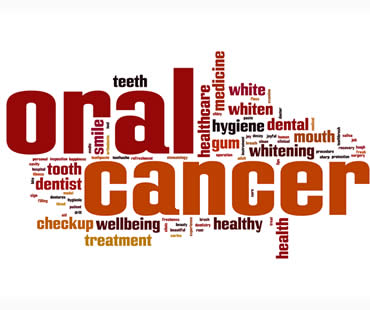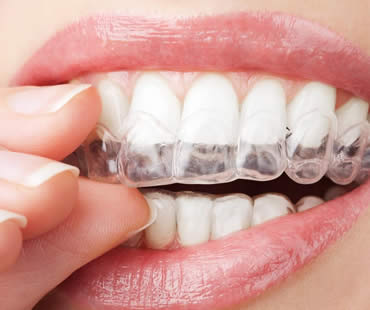
Restorative dentistry has made incredible advancements in the technology of restorative dental materials, and there are more options than ever today for your dental crown or dental bridge. Zirconium and porcelain have proven to provide lasting strength and durability, exhibiting the most natural cosmetic dental restorations available today. Each tooth in each mouth is different, however, and in some cases, resin composite or metal alloy might be the choice recommended for you.
Metals are a common choice for dental crowns and dental bridges. Gold or palladium alloys, as well as chromium or nickel (base-metal) alloys can be excellent choices. Metal alloy crowns show the least “wear down” over years of use. They almost never chip, break or wear down opposing teeth. The primary complaint about metal alloy materials is that their color is metallic and thereby unnatural. They will not blend with the surrounding teeth, and as such, they are chosen more for back molars where they won’t draw attention.
Dental composite/resin materials are a popular choice that can be made to blend with the surrounding teeth, but they’ve been shown to wear down over time and are more prone to fractures and breaking than other materials.
Porcelain can be fused to metal to form a natural-appearing crown or bridge, and because of their appearance, are a good choice for front or back teeth. Over time, however, discoloration can appear along the gum line as the porcelain wears away, leaving a dark, unsightly line. The porcelain can be fused to zirconium, however, which eliminates the dark line and is a good cosmetic choice for front teeth.
Crowns and bridges can also be made from all-porcelain or all-ceramic materials. These materials are the best choice for natural-looking teeth of the types of dental crown and dental bridge materials available in restorative dentistry today. Because they contain no metal, they are excellent choices for patients with metal allergies. They tend to be weaker and less durable than materials containing metals, however.
Talk to your cosmetic dentist today with any questions you have regarding what type of dental crown or bridge material is best for your smile needs.
We treat patients from Meriden and the surrounding area

People are talking about dental implants. They’re talking about what a secure, longterm solution they are for patients with missing teeth and how successful they are for dental patients of all types. Are you wondering if you’re a candidate for dental implant treatment? The answer is yes, you probably are!
The one factor that’s a must for being a dental implant candidate is that you must have a missing tooth. The AAOMS (American Association of Oral and Maxillofacial Surgeons) estimates that as many as 70% of all adults have lost a minimum of one adult tooth. If you are among this group and you have a missing tooth, you’re a candidate for dental implants. Some patients are better suited to this particular treatment, however, so making an informed decision regarding your particular tooth replacement is vital.
The healthier you are, the more successful your dental implant surgery will be. Some health conditions and diseases should be strongly factored into whether or not dental implants are the best tooth replacement option. Patients with the following conditions may experience difficulty in the fusing of implant and bone:
- Smoking
- Cancer
- Radiation to the jaws or face
- Diabetes
- Drug or alcohol dependency
- Acute gum disease/periodontitis
Typically, a tooth is lost due to an accident, tooth decay, advanced gum disease or a failed root canal treatment. Even though the cause of the tooth’s loss might be through poor oral health, the healthier your mouth and surrounding teeth are, the more successful a dental implant will be.
Because the health of the bone is directly related to the strength of the fusion of the bone to implant, patients with healthier bones will have more successful experiences with dental implants. Maintain a diet high in calcium and other bone-nourishing nutrients and drink plenty of fluids.
If you need a dentist in Meriden contact us today

Most people have friends or family who have had to deal with the disease cancer in some area of the body. Cancer can be described as uncontrollable cell growth that invades and damages surrounding tissue. Oral cancer often shows up as a persistent sore or growth in the mouth, but also includes cancers of the tongue, lips, cheeks, palate, throat, and sinuses. Like most cancers, it can be life threatening without early detection and treatment.
Symptoms
Common symptoms of oral cancer include:
- Swelling, lumps, or rough spots on your lips, gums, or other mouth areas
- White or red patches in your mouth
- Numbness or tenderness in your mouth, neck, or face
- Unexplained bleeding in your mouth
- Sore throat or feeling that something is stuck in your throat
- Persistent sores in the mouth, neck or face that bleed easily and do not heal in two weeks
- Hoarseness or chronic sore throat
- Difficulty swallowing, chewing, talking, or moving your jaw or tongue
- Earache
- Substantial weight loss
Risk factors
Men are at twice as high risk for oral cancer than women, and men over 50 are at greatest risk. The biggest risk factors include any kind of smoking or using smokeless tobacco, excessive alcohol consumption, excessive sun exposure, or family history of cancer. However, it’s important to know that more than 25 percent of oral cancers occur in people who do not smoke or only drink alcohol occasionally.
Diagnosis
Routine dental checkups include an examination for signs of oral cancer. A biopsy may be performed on any suspicious areas. Regular checkups are important so that tests can identify oral cancer early, before it can spread or progress.
Treatment
Oral cancer is often treated similarly to other types of cancers. It may include surgery to remove the growth, followed by radiation or chemotherapy to destroy remaining cancer cells.
If you live in the Meriden area contact us today

Sedation dentistry provides a way for those who experience anxiety or fear about visiting the dentist to get the treatment they need. It is also helping in relieving pain, and enabling more dental work to be performed in one visit. Two common methods of administering sedation are oral and intravenous (IV). Each type has its own unique characteristics and attributes.
Oral sedation involves swallowing pills or liquids. There are no shots, which is good news for patients afraid of needles. However, oral sedatives are less predictable because each medication affects people differently based on age, weight, medical history, and more. Also, there is a time delay between swallowing it and taking effect. Since the medication is absorbed through digestion, it is difficult to alter the sedation level quickly during treatment. Nearly all patients respond well to oral sedation, with few occurrences of any side effects. Patients typically don’t remember anything that occurred during treatment.
IV sedation means that the medication goes directly into the blood stream though an IV injection. A very powerful method, the effects are instant once the shot is given. If the medication begins to wear off, more can be administered through the IV for immediate results. IV sedation is very common during oral surgeries, which benefit from the ability to alter the medication dosage as needed. It is advantageous for long procedures or when multiple treatments are being done in one sitting. Patients will not remember the procedure or sometimes even the appointment at all. The biggest drawback of IV sedation is for patients who dislike needles. IV sedation requires that the dentist have special training and certification, so make sure that your dentist is qualified if this method is offered.
Both types of sedation can be effective depending on the situation and patient. Discuss your case with your dentist to help you decide which one might be the best for you.
If you need a dentist in Meriden contact us today

Traditional braces have long been thought to be the only option available to straighten your teeth and correct your bite issues. Advances in Invisalign aligners now give you a choice, one that might just leave your mouth healthier when all is said and done.
Invisalign aligners are clear plastic trays that are worn for up to twenty-two hours a day. They can be removed while eating and for cleaning. A series of trays is prepared to slowly guide the teeth into proper position over time. When one tray has done its job, the next tray in the series is utilized.
Traditional metal braces are extremely challenging to clean. The brackets and bands trap bacteria and food debris all around the teeth, and in order to prevent gum disease and cavities, wearers must thread floss painstakingly under each wire and floss each tooth one-by-one, threading again and again. Brushing is challenging, too, as brushes wear out very quickly and can’t always reach the difficult areas. Even using a waterpick can’t be fool proof, because if used incorrectly, bacteria and debris are simply pushed further into the gum pocket, causing irritation and leading to infections.
Invisalign allows you to take out your trays so you can brush and floss normally, just as you did before you began your treatment. Trays are rinsed with water and placed back in the mouth. The teeth are clean and the aligner is clean, all in a fraction of the time it would take to clean a mouthful of traditional braces.
Keep your mouth healthier by talking to your orthodontist today to see if Invisalign aligners are right for you and your smile goals.
We treat patients from Meriden and the surrounding area

Having straight teeth is a goal from young people through mature adults, and achieving a great smile without having to wear braces is a wonderful benefit. Awkward moments of a mouth full of metal, food particles stuck in your smile, and painful wires poking your cheeks are all erased. How do you make this happen? The answer is Invisalign.
Invisalign is an orthodontic solution that involves wearing a series of clear plastic aligners that fit right onto your teeth, and move them using slow pressure. They are nearly invisible and can be removed at any time, allowing you to follow your usual eating and hygiene routines.
The first step is taking impressions of your teeth and making a digital 3-D image so that an exact treatment plan can be created. You will be able to see how your teeth should look at each treatment stage. Your customized aligners will be made in a lab so that they fit comfortably yet do their job.
You will need to wear your aligners during the day and while you sleep, but remove them for eating and hygiene. You can even remove them for special occasions, as long as you strive to wear the aligners 22 hours each day. Roughly every two weeks, you will change to a new set of aligners that will advance you to the next stage of treatment. You will see your dentist about every six weeks for checkups.
Invisalign treatment lasts about a year for adults and about two years for teens. Your progress will be visible throughout treatment, motivating you to continue wearing them to transform your smile. Once your treatment is complete, you’ll have beautiful straight teeth and very few complaints about your orthodontic experience.
We look forward to seeing you in our Meriden dental office














